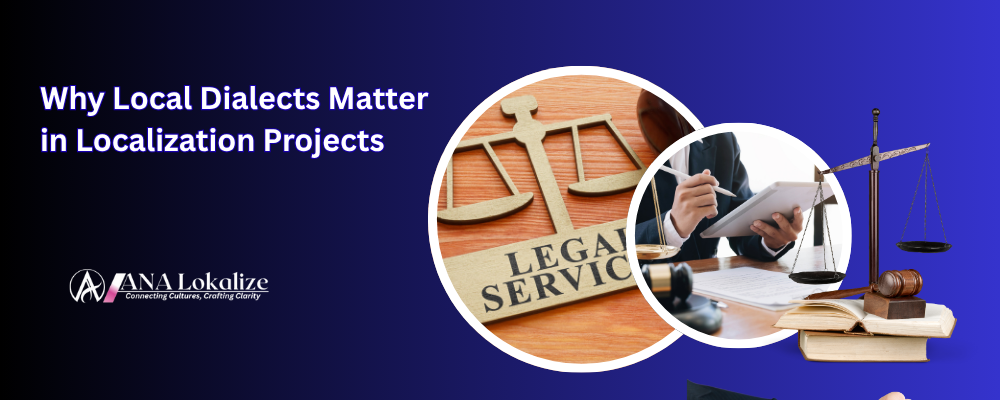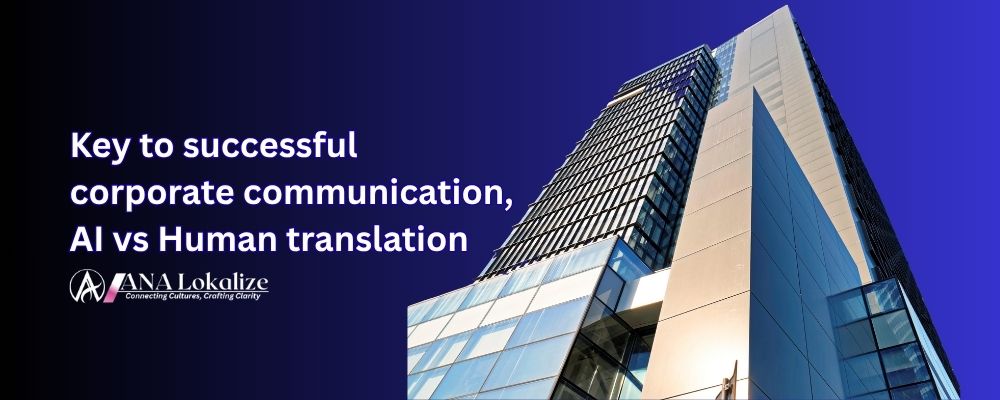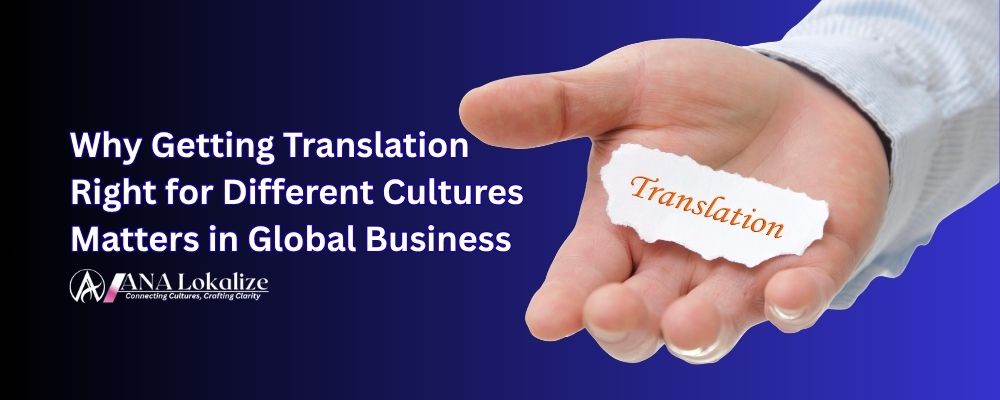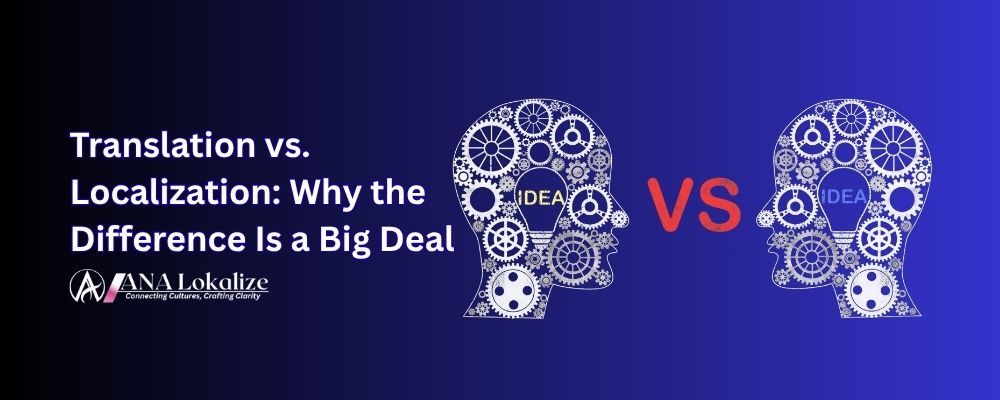Why Local Dialects Matter in Localization Projects

Dialects carry identity
Every dialect reflects a group’s history. It holds stories, traditions, and ways of seeing life. When someone hears their dialect, they feel recognized.
For example, Italian has strong regional speech. A greeting in Sicily may not sound the same as one in Milan. Using the right form creates warmth. Using the wrong one feels careless.
Language is not only about grammar. It is about emotion and identity. Dialects are the bridge to that deeper connection.
Words change across regions
The same word can mean different things in different areas. Without local knowledge, this leads to mistakes.
Spanish shows this clearly. In Spain, ordenador means computer. In Mexico, the same word is computadora. A company that uses the wrong term may confuse users.
Even simple food names differ. In Argentina, frutilla means strawberry. In other Spanish-speaking countries, it is fresa. Both are correct, but each feels natural only in its home region.
Using the right version shows care. It tells the audience that the message was built for them.
Tone and trust
Language is more than words. Tone matters. Some groups prefer polite and formal speech. Others enjoy casual, direct style.
In Japanese, keigo (formal speech) is needed for respect. Using casual forms in the wrong setting feels rude. In contrast, young internet users may prefer short, casual phrases.
When tone matches local expectations, trust grows. People feel the brand understands them. When it does not, the message feels fake or out of touch.
Humor and meaning
Jokes, puns, and sayings are tied to dialects. A funny line in one region may mean nothing in another. Worse, it may sound insulting.
For example, a phrase used as a joke in one part of India may sound offensive in another. Without local input, campaigns risk failure.
Local translators know when humor works and when it should be changed. This skill cannot come from machines alone.
Marketing impact
Ads succeed when they feel personal. Local dialects make ads sound closer to daily life. A slogan in local words spreads faster and feels friendly.
Think about Coca-Cola’s “Share a Coke” campaign. When names were printed on bottles, local names mattered. People looked for bottles with names they knew. The campaign would not have worked if only foreign names were used.
The same applies to dialects. People enjoy seeing their own way of speaking on products, ads, and media. It creates pride and loyalty.
Digital products and apps
Websites, apps, and support tools often fail when they ignore dialects. Users want words they know, not distant terms.
For example, a banking app in India may use Hindi. But Hindi terms vary across regions. Choosing the wrong word can confuse users. A word for “deposit” in one area may not be used in another.
If people struggle to read, they lose trust. But when terms match their dialect, they use the app with ease. The product feels built for them.
Case study: Chinese dialects
China has one official language, Mandarin. But many people speak Cantonese, Shanghainese, or Hokkien at home.
In Hong Kong, Cantonese dominates daily life. A campaign written only in Mandarin may sound distant. Brands that add Cantonese versions show care and respect.
In apps and media, Cantonese slang is common. Young users prefer it. A message in formal Mandarin may feel too stiff for them. Using dialects helps brands connect with local trends.
Case study: Arabic dialects
Arabic is another example. Standard Arabic is used in media and schools. But each region has its own dialect. Egyptian Arabic, Levantine Arabic, and Gulf Arabic all differ.
A TV ad in Morocco may confuse people in Saudi Arabia if dialect is not adapted. The words may be understood, but the tone feels foreign.
Localization projects that use the right dialect reach deeper. They build stronger cultural ties and show true respect for local identity.
Case study: English dialects
Even English has many dialects. American, British, Australian, and Indian English all differ in spelling, words, and tone.
In the US, people say “apartment.” In the UK, it is “flat.” In the US, “chips” means thin potato slices. In the UK, “chips” are thick fries.
For global brands, ignoring these details can cause confusion or even laughter. Adapting to each dialect avoids mistakes and builds credibility.
Role of professional translators
Professional translators with local roots are key. They know how words are used in daily life. They can adjust tone, style, and slang to fit the audience.
CAT tools and glossaries help, but machines alone are not enough. They may give correct grammar but miss cultural context. Only human translators can decide when a phrase should change to protect meaning.
In localization projects, hiring translators with regional knowledge makes the final product stronger. It saves brands from costly mistakes.
Balancing standard and local
Not every message should be full of dialect words. Too much slang can confuse outsiders or sound unprofessional. The key is balance.
Use standard language for clarity. Add local touches to show connection. This mix works best for products that reach wide but still want local trust.
For example, a national ad may use standard language with one or two local phrases. This keeps it clear but still personal.
Technology and dialects
Technology is starting to help with dialects. Speech recognition now adapts to local accents. Apps can detect region and adjust spelling or words.
Still, the heart of dialect use is human choice. Technology supports, but people guide. Translators and local experts decide which words matter most.
Conclusion
Dialects are not side notes. They are part of identity, culture, and trust. They shape how people hear and feel messages.
In localization projects, ignoring dialects creates distance. Respecting them builds loyalty and success.
Words carry more than meaning. They carry pride, history, and belonging. To connect with people, speak in their dialect.
Stephane B. Atangana
Professional translation and localization experts with 10 years of experience in helping businesses connect with global audiences.
Search Articles
Related Articles

key to successful corporate communication, AI vs Human translation

Why Getting Translation Right for Different Cultures Matters in Global Business

Translation vs. Localization: Why the Difference Is a Big Deal
Subscribe to Our Newsletter
Get the latest translation insights and industry news delivered to your inbox.
We respect your privacy. Unsubscribe at any time.
